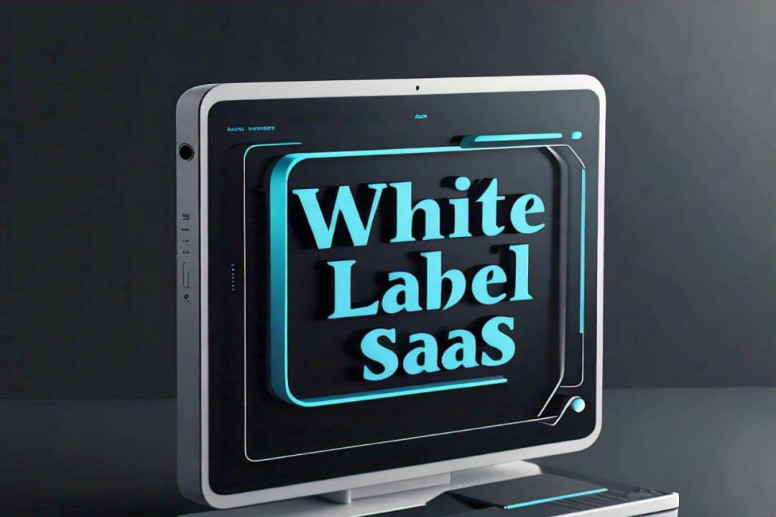
30 Sep
White Label SaaS: A Comprehensive Guide for Businesses.
Introduction:
For every business trying to save cost, time and resources, White Label SaaS should be their go-to software.
In the ever-evolving world of technology, businesses are constantly seeking ways to streamline their operations, reduce costs, and deliver exceptional services to their customers. One innovative solution that has gained significant traction in recent years is White Label SaaS (Software as a Service).
This comprehensive guide will delve into the world of White Label SaaS, exploring its benefits, use cases, and the steps businesses can take to leverage this powerful tool.
Table of contents:
- What is white label SaaS?
- What does white labeling mean in software?
- Examples of white-label SaaS
- Do I have to learn coding before using white-label software products?
- Can I buy white-label software?
- Advantages of white label SaaS Consideration before buying white label SaaS
- Best practices for white-label implementation
What is White Label SaaS?
White Label SaaS refers to a software product or service that is branded and customized for a business, allowing them to offer it as their own. This means that the underlying technology and infrastructure are provided by a third-party SaaS provider, but the business can fully brand and market the solution as their own, without the need to develop the software from scratch.In essence, White Label SaaS enables businesses to capitalize on the expertise and resources of a SaaS provider, while maintaining their own brand identity and control over the customer experience. This model allows businesses to focus on their core competencies while outsourcing the technical aspects of software development and maintenance to the White Label SaaS provider.
What does White Labeling Mean in Software?
White labeling in the software industry refers to the practice of rebranding a product or service to make it appear as if it were developed in-house. In the context of SaaS, white labeling involves customizing the software's appearance, branding, and functionality to align with the business's unique identity and requirements.
The key aspects of white labeling in software include:
1. Branding: The software is rebranded with the business's logo, colour scheme, and other visual elements, creating a seamless integration with the business's existing brand.
2. Customization: The software's features, user interface, and functionality can be tailored to meet the specific needs of the business and its customers.
3. Ownership: The business can present the white label SaaS as their product or service, without the end-user being aware of the underlying third-party provider.
4. Pricing and Packaging: The business can set its pricing and packaging for the white label SaaS, aligning it with their overall business strategy and target market.
Examples of White Label SaaS
White Label SaaS solutions span a wide range of industries and use cases. Here are a few examples to illustrate the versatility of this approach:
1. Customer Relationship Management (CRM) Software: Businesses can utilize white-label CRM platforms to manage their sales pipelines, customer data, and workflow processes, all under their brand.
2. Last Mile Delivery (Logistics) software: Ecommerce business owners (such as retailers, wholesalers & online merchants) can leverage this white label solutions to leverage this white-label e-commerce solutions to efficiently manage their logistics and delivery routes.
See more information here
Get our last Mile Delivery SAAS here
3. AI SAAS (Supports Both Web platforms & WhatsApp Integration): Every business can adopt White Labelled AI software solutions to allocate tasks, train the AI with company, and to also provide 24/7 customer support.
More information here.
Get our AI SaaS with just one-time purchase here.
4. Learning Management Systems (LMS): Educational institutions and corporate training providers can utilize white-label LMS platforms to deliver online courses, manage learner enrollments, and track student progress.
These are just a few examples of the vast array of White Label SaaS solutions available in the market. By partnering with the right SaaS provider, businesses can find white-label options that cater to their specific industry needs and requirements.
Do I Have to Learn Coding Before Using White Label Software Products?
One of the key benefits of White Label SaaS is that it does not require businesses to have in-depth coding or technical expertise. The white label software is typically designed to be user-friendly and intuitive, with a focus on empowering non-technical users to manage and customize the solution.While some basic understanding of the software's functionality and features can be helpful, businesses do not need to learn coding or have a dedicated IT team to utilize white-label software products. The SaaS provider often handles the technical aspects, such as hosting, maintenance, and updates, allowing the business to focus on integrating the solution into their operations and branding it accordingly.
In many cases, white-label software providers offer comprehensive onboarding and training resources, including tutorials, documentation, and customer support, to ensure a seamless adoption process. This enables businesses, even those with limited technical expertise, to quickly and effectively implement and manage the white-label software solution.
Yes, businesses can purchase white-label software solutions from various SaaS providers. The process typically involves the following steps:
1. Research and Evaluation: Businesses should assess their specific needs, budget, and features required in a white-label software solution. This will help narrow down the selection of potential providers.
2. Provider Selection: Research and compare different white-label SaaS providers, considering factors such as their industry experience, customer support, customization options, and pricing models.
3. Customization and Branding: Once a provider is selected, the business can work with them to customize the software's branding, user interface, and specific functionalities to align with their requirements.
4. Implementation and Integration: The white-label software solution will be integrated into the business's existing systems and workflows, ensuring a seamless user experience for both the business and its customers.
5. Ongoing Support and Maintenance: The SaaS provider will typically handle the technical aspects of software maintenance, updates, and customer support, allowing the business to focus on its core operations and the customer experience.
It's important to note that the process of purchasing and implementing white-label software may vary across different providers, and businesses should carefully evaluate the terms, pricing, and support offerings to ensure a successful partnership.
Advantages of White Label SaaS for Businesses
Adopting a White Label SaaS solution offers a range of benefits for businesses, including:
1. Cost Savings: By leveraging the expertise and resources of a SaaS provider, businesses can avoid the significant upfront costs and ongoing maintenance associated with developing and hosting their software solutions.
2. Faster Time-to-Market: White-label software solutions are typically pre-built and ready-to-use, allowing businesses to quickly integrate and deploy the software without the need for extensive in-house development.
3. Scalability and Flexibility: White-label SaaS solutions are designed to scale with the business, easily accommodating growth in user numbers, data storage, and feature requirements.
4. Branding and Customization: Businesses can fully brand the white-label software as their own, ensuring a consistent and seamless user experience for their customers.
5. Reduced Technical Burden: The SaaS provider handles the technical aspects of software maintenance, updates, and security, freeing up the business's resources to focus on their core competencies.
6. Access to Cutting-edge Technology: White-label SaaS solutions often leverage the latest technological advancements, ensuring that businesses can offer their customers a modern and robust software experience.
7. Improved Efficiency and Productivity: By automating various business processes and streamlining workflows, white-label software can enhance overall operational efficiency and employee productivity.
8. Enhanced Customer Satisfaction: The ability to tailor the software to meet the specific needs of customers can lead to improved customer satisfaction and loyalty.
Challenges and Considerations for White-Label SaaS Adoption
While the benefits of White Label SaaS are substantial, businesses should also consider the potential challenges and factors to address when adopting this solution:
1. Vendor Selection: Carefully evaluating and selecting the right white-label SaaS provider is crucial, as the provider's capabilities, reliability, and support will directly impact the business's operations and customer experience.
2. Data Security and Privacy: Businesses must ensure that the white-label SaaS provider adheres to robust data security and privacy standards, particularly if the software will be handling sensitive customer or financial information.
3. Customization Limitations: While white-label software is designed to be customizable, there may be limits to the extent of customization available, which could impact the alignment with the business's unique requirements.
4. Integration with Existing Systems: Businesses must assess the white-label SaaS solution's compatibility and ease of integration with their current software systems and workflows, to avoid disruptions and ensure a seamless user experience.
5. Ongoing Maintenance and Support: Businesses should understand the SaaS provider's support and maintenance policies, as well as their role in managing the white-label software solution.
6. Pricing Transparency: It's important to thoroughly understand the pricing structure and any potential hidden costs associated with the white-label SaaS solution to ensure a clear and sustainable financial model.
7. Branding Considerations: While white-label software allows for branding and customization, businesses must ensure that the branding aligns with their overall marketing strategy and brand identity.
By addressing these challenges and considerations, businesses can maximize the benefits of White Label SaaS and seamlessly integrate the solution into their operations.
Best Practices for Implementing White Label SaaS
To ensure a successful implementation of a White Label SaaS solution, businesses should consider the following best practices:1. Clearly Define Business Requirements: Thoroughly assess the business's needs, existing workflows, and pain points to identify the specific features and functionalities required in the white-label software.
2. Plan for Seamless Integration: Develop a detailed integration plan to ensure the white label software seamlessly integrates with the business's existing systems, workflows, and infrastructure.
3. Establish Clear Roles and Responsibilities: Clearly define the responsibilities of the business and the SaaS provider in terms of software management, updates, and support to ensure a smooth and efficient partnership.
4. Provide Comprehensive User Training: Develop and implement a thorough user training program to ensure that employees can effectively utilize the white-label software and maximize its benefits.
5. Monitor Performance and Continuously Optimize: Regularly review the performance of the white label software, gather user feedback, and make necessary adjustments to optimize the solution for the business's evolving needs.
6. Maintain Open Communication with the SaaS Provider: Foster a collaborative relationship with the white-label SaaS provider, regularly discussing feedback, issues, and future enhancements to ensure a mutually beneficial partnership.
By following these best practices, businesses can successfully implement a White Label SaaS solution, unlock its full potential, and drive tangible benefits for their organization and customers.
Conclusion
White Label SaaS presents a compelling solution for businesses seeking to leverage cutting-edge technology, enhance their brand identity, and streamline their operations. By partnering with a reputable SaaS provider, businesses can access a wide range of customizable software solutions, without the burden of in-house development and maintenance.
As businesses navigate the ever-changing landscape of technology, the adoption of White Label SaaS can provide countless advantages, enabling them to focus on their core competencies, deliver exceptional customer experiences, and drive sustainable growth.
By understanding the key aspects of White Label SaaS, evaluating the available options, and following best practices for implementation, businesses can explore the maximum potential of this innovative solution and position themselves for long-term success.

